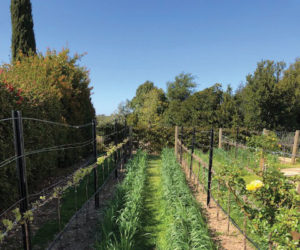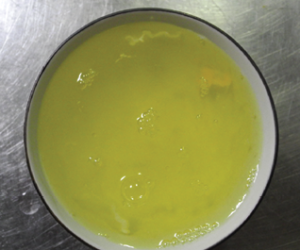
Q
I am a beginning winemaker. I have yet to make my first batch, but I just got a kit that contains Pinot Noir juice. I want to make a sulfite-free wine because I am allergic to sulfites. How is this done and what should I be aware of?
James Pell
Rochester, New York
A
It is impossible to make a sulfite-free wine, because wine yeast produce sulfur dioxide (SO2) during the fermentation process. Wines with no added sulfite contain from 6 to 40 ppm of sulfite, according to most experts. Furthermore, it’s likely that the concentrate in your Pinot kit already got a healthy dose of sulfur dioxide at the processing plant.
Before you toss out your kit, check with your physician to make sure that you really are allergic to sulfites. Only a small percentage of the population (approximately 0.01%) is truly allergic to sulfites. These people lack the digestive enzyme sulfite oxidase and therefore can’t metabolize sulfites. This small percentage of the population is also asthmatic, so many doctors test their patients for sulfite allergies when a diagnosis of asthma is made. These individuals typically know they’re allergic from childhood and so know to avoid all foods and beverages that contain sulfites including, but not limited to, lunchmeats, processed salami, processed fruit juices, packaged seafood and dried fruits, as well as wine.
Sulfur dioxide gets a bad rap because of the government warning label plastered on wine bottles that is only targeted to this select group of consumers. Furthermore, many people blame sulfites for the group of symptoms commonly called the “wine headache.” These symptoms are often simply caused by the alcohol in the product. There has been some speculation in the medical community that histamines — a naturally occurring substance found in foods like canned tuna and wine — are a possible culprit of this “red wine malaise,” but there has been no conclusive evidence so far. Ironically, many consumers drink white wine, thinking red wines have more sulfites, when actually white wines typically do.
If you want to lessen the amount of sulfites you use in your wine, keep the following things in mind. Sulfur dioxide is used for two reasons: its anti-microbial ability and its antioxidant capacity. Therefore, if you want to use less of it, minimize the amount of microbes and oxygen that contact your wine in every stage of its life. Cleaning and sanitizing effectively is one of the easiest ways to knock down populations of spoilage bugs. Make sure your incoming fruit, juice or concentrate is clean and free of visible mold or bacterial colonies before inoculation. Use a strongly-fermenting commercial yeast for your primary fermentation in order to out-compete spoilage organisms in the first few weeks of a wine’s life. Make sure your wines are fermented to dryness so there is no residual sugar left as a carbon source for spoilage bacteria. Gas your empty containers with carbon dioxide during transfers and rackings so that there is minimal contact with oxygen.
Natural wine components that inhibit organisms are alcohol and acid. High pH (low acid) wines are more prone to microbial attack, so keeping the pH lower than 3.5 will help retard infection. The lower the pH, the more unhappy most sorts of spoilage bacteria will be. Similarly, the higher the alcohol, the more unhappy the organisms. Alcohol levels over 14% can help to keep bugs at bay.
At the end of the day, using sulfites in winemaking is usually not a health issue. Judicious of sulfite use can significantly increase the quality of your wine. International regulatory boards usually set legal levels at around 350 ppm total sulfur dioxide and most commercial wines are bottled with totals between 50-100 ppm. A little bit of SO2, used wisely, goes a long way and won’t hurt 9,999 out of 10,000 of us.
Q
I desperately need to know how to cool my primary. I use two 50-gallon (190-L) barrels to ferment my wine and am tired of using frozen one-gallon (3.8-L) plastic jugs. There has to be a better way.
Vince Richter
Winnipeg, Canada
A
At my winery, I sometimes ferment grapes in the large, plastic bins they were picked in and I have similar cooling issues to the ones you’ve described above. Cooling your wine is important if your fermentation is getting out of control. Otherwise, the fermentation may give off hydrogen sulfide (indicated by a rotten-egg smell). In addition, the vigorous ferment can blow off the primary fruit aromas and have other deleterious effects on your wine.
The way you’ve cooled your primary in the past — by freezing one-gallon (3.8-L) jugs full of water — is actually one of the cheapest, easiest and fastest ways around. Many winemakers I know are still fans of this technique.
For those readers out there that have never done the “ice cube shuffle,” cooling your must with plastic jugs goes something like this: Obtain some 1-gallon plastic jugs or other similar containers. They must be able to be sealed tightly. Fill them with water and put as many of them as you can in the freezer. Once frozen, make sure they are sealed tightly and dump them into your primary container. Depending upon how much cooling power you need, and how large your fermenter is, the number you need may change. A 50-gallon (190-L) trash can that’s gently simmering might need a single gallon jug while a 200-gallon (760-L) batch that’s peaking at 8 °Brix and 90 °F (32 °C) might take six. Punch down the fermenter, mixing thoroughly until the desired temperature is reached. While doing this, put more jugs in the freezer as you’ll probably have to pitch in some new ones eight hours later.
Needless to say, this technique is labor-intensive. If you don’t have a freezer, or just want to try something a little more automatic, you might want to try to concoct yourself a homemade cooling coil. A cooling coil is essentially a stainless-steel coil; you can place it in your fermenter and run cold water through it to cool the juice or must. I first had the pleasure of using one of these coils when I was working at a little winery up in the Santa Cruz Mountains of California and I have never been without one since.
The first step is to make a coil out of one-inch or 1.5-inch stainless steel tubing. This is where the metalworking comes in . . . you need a heat source to be able to bend the tubing. The cooler I have stands about three feet high, with coils that are about eight inches in diameter and about four inches apart vertically. I can lift this coil in and out of anything from a 50-gallon trash can to a large fermenter. You need to weld on standard garden hose fittings or, if you want hot water, you might want quick-connects for a water heater.
Many homebrew stores sell wort chillers, copper coils used for cooling unfermented beer (wort) after it has been boiled. Winemakers should avoid these as you should not allow copper to touch your wine. The pH of wine is much lower than that of wort and copper will leach into your wine.
Once you can hook the loop up to a water source and turn the water on slowly, you have a constant source of cool, warm or hot water travelling through the tube and cooling or heating your juice or must — sort of like a tank-cooling jacket but on the inside! Try to recycle the water by having the outlet end of the tube go out to your garden, yard or vineyard. Sanitize this device (or the frozen gallon jugs) just like you would anything else in your winery.
For more of the Wine Wizard’s wisdom, pick up the latest issue of WineMaker magazine, now available at better home winemaking retailers and bookstores.




